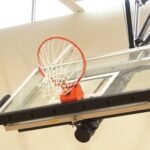Introducing measurement concepts to children can be both enjoyable and educational. One effective method is using sticky notes to measure height, allowing kids to grasp measurement principles through interactive play.
The Sticky Note Height Measurement Activity
This activity involves children measuring the height of objects or themselves using sticky notes as non-standard units of measurement. It’s a practical approach to help them understand measurement basics before transitioning to standard units.
Materials Needed
- Sticky notes of uniform size
- A variety of objects to measure (e.g., books, toys)
- A wall or chart for measuring children’s heights
- Paper and pencils for recording measurements
Steps to Conduct the Activity
- Select Objects to Measure: Choose items of varying heights to maintain engagement.
- Demonstrate Measurement: Show how to align sticky notes end-to-end without gaps or overlaps along the height of an object.
- Measure and Record: Have children measure each object and note the number of sticky notes tall each one is.
- Measure Personal Height: Children can work in pairs to measure each other’s height using sticky notes, recording the results for comparison.
- Compare and Discuss: Encourage discussions about which objects or individuals are taller or shorter, fostering comparative language skills.
This activity not only teaches measurement but also enhances fine motor skills and cooperative learning.
Benefits of Using Sticky Notes for Measurement
- Visual Learning: Children see the measurement process, aiding comprehension.
- Hands-On Engagement: Active participation makes learning enjoyable and memorable.
- Foundation for Standard Measurement: Using non-standard units like sticky notes prepares children for understanding standard units later on.
By incorporating this fun sticky note activity, children can develop a solid understanding of measurement concepts in an interactive manner.
FAQ
1. What age group is this activity suitable for?
This activity is ideal for preschool and early elementary-aged children, typically between 4 to 7 years old.
2. How does this activity help in learning measurement?
It introduces measurement concepts using non-standard units, helping children grasp the idea of quantifying height before moving on to standard units like inches or centimeters.
3. Can this activity be done individually?
Yes, children can measure objects individually, but measuring each other’s height works best in pairs or groups to encourage collaboration.
4. What skills does this activity develop?
It enhances fine motor skills, cooperative learning, understanding of measurement concepts, and comparative language usage.
5. How can I extend this activity?
You can introduce different non-standard units for measurement, such as blocks or hand spans, to compare results and deepen understanding.
Engaging children in measuring height with sticky notes offers a playful yet educational experience, laying the groundwork for more advanced mathematical concepts.










